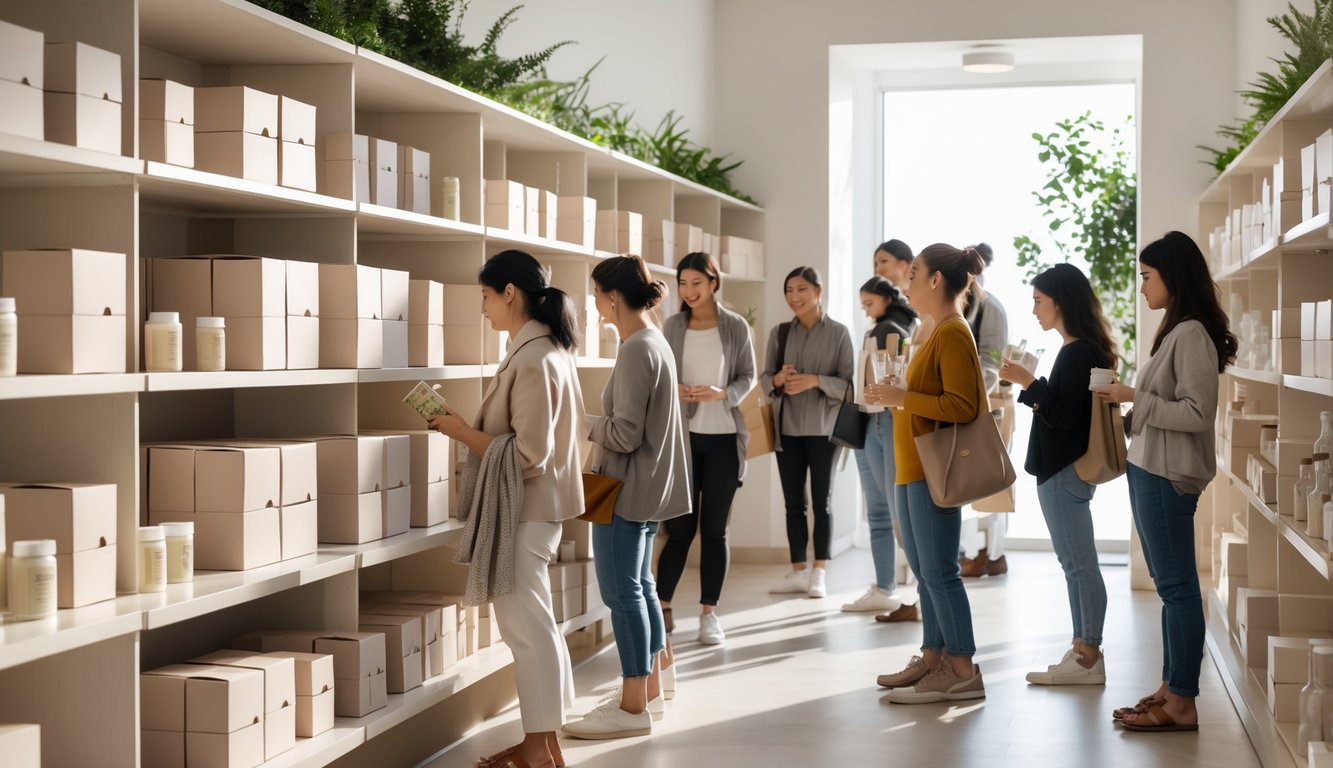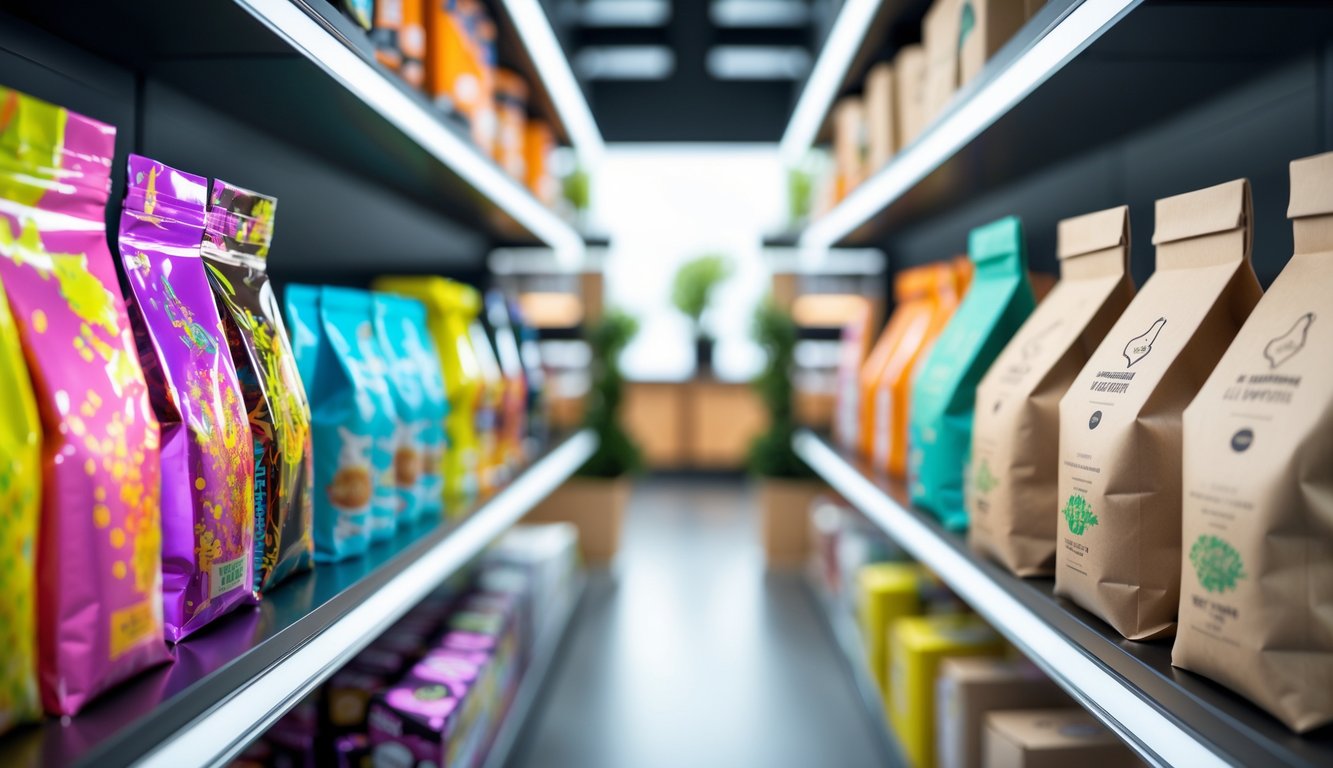
Okay, so—lately, every grocery run feels like wandering through a minimalist art exhibit. Did all the holographic cereal boxes get banned overnight? I swear, last year it was neon unicorns everywhere. Now it’s like, “Here’s your beans. They’re in a beige bag. Deal with it.” And apparently, it’s not just my neighborhood store being weird. Some survey—Yahoo Finance, I think—says 86% of people are just grabbing generic brands and skipping the fancy stuff, mostly because, yeah, everything costs too much and nobody’s feeling rich. My friend who does “consumer insights” (whatever that means) calls it “sticker shock fatigue.” I mean, that’s a phrase I’d put on a t-shirt.
Packaging designers are losing their minds. I sat in a client call where “emotional pull” came up like twelve times in six minutes—what does that even mean? If you’re still putting your cookies in a disco ball box, good luck, because nobody cares. People want value. They’ll toss your box in the trash and never think of it again. Retailers? They’re just trying to survive, swapping out the expensive, shiny stuff for plain labels and hoping someone notices. I even tried to get the self-checkout attendant’s opinion, but she just told me to stop holding up the line. Classic.
Had a chocolate client once admit they switched to thinner wrappers just to save cash on shipping. Now they call it “sustainable packaging” like it was some grand eco plan. Sure. And everyone’s obsessed with “modular” packaging now, whatever that is—read this if you’re bored. I can’t even keep track of what brand I’m buying anymore. Maybe that’s the point? Or maybe I just need to sleep more.
The Shift Away From Flashy Packaging

Honestly, I don’t even see the shiny boxes anymore. I walk down the aisle, brain fried, just scanning prices and ingredients. Minimalism isn’t some TikTok trend—okay, maybe it is, but it’s also just… everywhere. Try finding your favorite old brand now. Good luck. Everything blends together. Is this supposed to be progress?
Drivers of the Packaging Transformation
If I see “sustainability” in one more press release, I’ll scream. But it’s not just a buzzword—there’s real pressure. Brands are scrambling to keep up with new rules and customers who can spot greenwashing from a mile away. Label-less packaging is popping up all over the place. Sometimes I wonder if anyone even reads the label.
Costs, though. That’s the real killer. I’ve sat in meetings where people just admit it: “Let’s ditch the glitter, it’s expensive.” Nobody needs a rainbow box if the product’s story is on a QR code anyway. Vicki Strull (she’s a packaging designer, apparently a big deal) says even rich folks are tired of paying extra for a box they’ll just recycle. Makes sense, I guess.
Tech’s gotten weird, too. I’m scanning cans with my phone now. Six years ago, who did that? Now every package is recyclable, less plastic, less ink. Single-use plastic is out. Unless you’re into nostalgia. Or you just don’t care.
Evolving Consumer Preferences
Who actually knows what shoppers want? Trends are all over the place. But one thing’s clear: people want less packaging. That’s it. Graham Packaging, Nielsen, whatever—every survey says the same thing: “clear, honest, eco-friendly design” beats “exciting graphics” for anyone under forty.
Used to be, I’d pick coffee based on the wildest bag. Now my neighbor just flips it over to check if it’s recyclable. Everyone’s paranoid about greenwashing. Proof or nothing. Those eye-tracking studies? Turns out, if you don’t slap a recycling symbol on the front, shoppers stop looking after three seconds. They’ll just Google something else, right there in the aisle.
People complain about everything: hard-to-open packs, too much plastic, confusing labels. The only thing everyone wants? Simple, clear, easy, and maybe a vague sense of not destroying the planet. It’s not just Gen Z, either. Boomers complain about waste, Gen Z just posts your failures online. If you mess up, you’ll see it on social before you even finish your coffee.
Impact on Brand Identity
Some marketers are still clinging to the idea that the box makes the brand. But, look at the numbers—brands that go minimalist don’t collapse. Sometimes loyalty even goes up. Authenticity wins. People see a plain box and think, “Okay, you care about what’s inside.” Word-of-mouth and value matter more than shiny foil.
The switch can be awkward. Sometimes you get a plain box with a weirdly detailed story printed on the inside. Half the time the print’s crooked. But people like it. They trust it more. Shopper interviews say clean packaging means trustworthy brand. Less clutter, fewer distractions.
Nobody’s saying brands have to disappear into beige nothingness. Minimalist packaging just puts the focus on what matters. Some companies even add recycling instructions right on the box. It’s messy, trial and error, but at least it looks like brands are actually listening now. Or pretending to.
Minimalism Redefines Packaging Design
You know what’s weird? Nobody told me how much this minimalist thing would actually change stuff. Suddenly, my tea comes in a plain box. My moisturizer? Looks like it’s in a government-issued envelope. There’s more to it, though. Apparently, it works. People buy more. Or at least they don’t complain as much. The math is ugly, but it checks out.
Rise of Minimalist Packaging
Remember when toothpaste boxes tried to blind you with neon? Now brands brag about doing less. Minimalist packaging isn’t about style—it’s just cheaper, lighter, easier to ship, and apparently “improves environmental credibility” by default. Not that anyone planned it that way.
Sometimes I wonder if it’s just marketing to my guilt. But when I see a plain pack with a single logo, at least I don’t feel like I’m being lied to. Supply chain people love it—less color, fewer problems. Designers? They’re bored. Sustainability teams? They’re thrilled. I’ve seen them high-five over a brown box.
Perceived Value and Simplicity
Someone (probably a branding guy) swore 60–80% of people switch brands just because of bad packaging. Like, if the seal rips weird or the box is confusing, you’re out. I tried this with friends: gave them two soy milks, one busy, one minimal. They all picked the simple one as “premium.” Joke’s on them, it’s the same stuff.
The less info on the box, the fancier it looks. Minimalist packaging means brands are literally removing details. One plain soap box, no story, just a word. Impulse buyers love it. It’s wild. Less clutter, more trust. And somehow, they can charge more for it. I’m still mad about how loud toothpaste is, though.
Minimalist Design in Action
Last week I opened a protein bar. The wrapper? Just text. Macros, QR code, no fake “artisan” graphics. Almost missed it. But opening it? Easy. That’s minimalist packaging in action—less waste, fewer steps, focus on the product.
But, okay, food safety laws still mean you get a white box, black text, then a wall of tiny warnings on the back. Still, brands pull it off. People care about clarity and function. Nestlé’s guy at a conference said their “plain” redesign cut returns by 22%. Nobody noticed the barcode got huge. I trust those bars more now, even though they still taste like cardboard.



